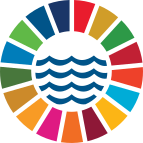Inclusive Niue Ocean Management (Blue Economy) Strategy
United Nations Development Programme (United Nations), Government of Niue (Local Government), Tofia Niue (NGO), Blue Nature Alliance (NGO)
(
United Nations / Multilateral body
)
#OceanAction47416
Description
Support the Government of Niue with the development of a two-step gender sensitive Niue Integrated Ocean Management Strategy (NIOMS) for the country’s entire EEZ. First, a scoping study of Niue’s multi-sectoral ocean economy will be conducted, including a gender sensitive diagnostic analysis, based on the stock take of existing ocean-based economic activities, including gender issues, conservation efforts and governance, policy and legal arrangements. This first step will highlight and recommend inclusive blue economy opportunities and interventions, including blue growth enabling environment requirements. The scoping study will then inform the second step, which seeks to develop a roadmap with a clear action plan and implementation strategy for integrated ocean management and blue growth. This intervention has a threefold objective to: i) enhance inclusive governance, management, forecasting and monitoring of marine ecosystem health and ocean resources, ii) strengthen gender responsive marine-based livelihoods and food security through an ecosystem-based adaptation (EbA) approach; and iii) unlock and catalyse recovery-oriented income-generating entrepreneurship, employment and diversification opportunities, particularly in food value chains, for females and males across all vulnerable populations.
UNDP (United Nations/Multilateral Body) FAO (United Nations/Multilateral Body) UNICEF (United Nations/Multilateral Body) Government of Niue (Local Government) Tofia Niue (NGO) Blue Nature Alliance (NGO)
SDGS & Targets
Goal 2
End hunger, achieve food security and improved nutrition and promote sustainable agriculture
2.1
By 2030, end hunger and ensure access by all people, in particular the poor and people in vulnerable situations, including infants, to safe, nutritious and sufficient food all year round
2.1.1
Prevalence of undernourishment
2.1.2
Prevalence of moderate or severe food insecurity in the population, based on the Food Insecurity Experience Scale (FIES)
2.2
By 2030, end all forms of malnutrition, including achieving, by 2025, the internationally agreed targets on stunting and wasting in children under 5 years of age, and address the nutritional needs of adolescent girls, pregnant and lactating women and older persons
2.2.1
Prevalence of stunting (height for age <-2 standard deviation from the median of the World Health Organization (WHO) Child Growth Standards) among children under 5 years of age
2.2.2
Prevalence of malnutrition (weight for height >+2 or <-2 standard deviation from the median of the WHO Child Growth Standards) among children under 5 years of age, by type (wasting and overweight)
2.2.3
Prevalence of anaemia in women aged 15 to 49 years, by pregnancy status (percentage)
2.3
2.3.1
Volume of production per labour unit by classes of farming/pastoral/forestry enterprise size
2.3.2
Average income of small-scale food producers, by sex and indigenous status
2.4
By 2030, ensure sustainable food production systems and implement resilient agricultural practices that increase productivity and production, that help maintain ecosystems, that strengthen capacity for adaptation to climate change, extreme weather, drought, flooding and other disasters and that progressively improve land and soil quality
2.4.1
Proportion of agricultural area under productive and sustainable agriculture
2.5
By 2020, maintain the genetic diversity of seeds, cultivated plants and farmed and domesticated animals and their related wild species, including through soundly managed and diversified seed and plant banks at the national, regional and international levels, and promote access to and fair and equitable sharing of benefits arising from the utilization of genetic resources and associated traditional knowledge, as internationally agreed
2.5.1
Number of (a) plant and (b) animal genetic resources for food and agriculture secured in either medium- or long-term conservation facilities
2.5.2
Proportion of local breeds classified as being at risk of extinction
2.a
2.a.1
The agriculture orientation index for government expenditures
2.a.2
Total official flows (official development assistance plus other official flows) to the agriculture sector
2.b
Correct and prevent trade restrictions and distortions in world agricultural markets, including through the parallel elimination of all forms of agricultural export subsidies and all export measures with equivalent effect, in accordance with the mandate of the Doha Development Round
2.b.1
Agricultural export subsidies
2.c
Adopt measures to ensure the proper functioning of food commodity markets and their derivatives and facilitate timely access to market information, including on food reserves, in order to help limit extreme food price volatility
2.c.1
Indicator of food price anomalies
Goal 10
Reduce inequality within and among countries
10.1
By 2030, progressively achieve and sustain income growth of the bottom 40 per cent of the population at a rate higher than the national average
10.1.1
Growth rates of household expenditure or income per capita among the bottom 40 per cent of the population and the total population
10.2
By 2030, empower and promote the social, economic and political inclusion of all, irrespective of age, sex, disability, race, ethnicity, origin, religion or economic or other status
10.2.1
Proportion of people living below 50 per cent of median income, by sex, age and persons with disabilities
10.3
Ensure equal opportunity and reduce inequalities of outcome, including by eliminating discriminatory laws, policies and practices and promoting appropriate legislation, policies and action in this regard
10.3.1
Proportion of population reporting having personally felt discriminated against or harassed within the previous 12 months on the basis of a ground of discrimination prohibited under international human rights law
10.4
Adopt policies, especially fiscal, wage and social protection policies, and progressively achieve greater equality
10.4.1
Labour share of GDP
10.4.2
Redistributive impact of fiscal policy
10.5
Improve the regulation and monitoring of global financial markets and institutions and strengthen the implementation of such regulations
10.5.1
Financial Soundness Indicators
10.6
10.6.1
Proportion of members and voting rights of developing countries in international organizations
10.7
Facilitate orderly, safe, regular and responsible migration and mobility of people, including through the implementation of planned and well-managed migration policies
10.7.1
Recruitment cost borne by employee as a proportion of montlhy income earned in country of destination
10.7.2
Number of countries with migration policies that facilitate orderly, safe, regular and responsible migration and mobility of people
10.7.3
Number of people who died or disappeared in the process of migration towards an international destination
10.7.4
Proportion of the population who are refugees, by country of origin
10.a
10.a.1
Proportion of tariff lines applied to imports from least developed countries and developing countries with zero-tariff
10.b
10.b.1
Total resource flows for development, by recipient and donor countries and type of flow (e.g. official development assistance, foreign direct investment and other flows)
10.c
By 2030, reduce to less than 3 per cent the transaction costs of migrant remittances and eliminate remittance corridors with costs higher than 5 per cent
10.c.1
Remittance costs as a proportion of the amount remitted
SDG 14 targets covered
| Name | Description |
|---|---|
| 14.7 | By 2030, increase the economic benefits to Small Island developing States and least developed countries from the sustainable use of marine resources, including through sustainable management of fisheries, aquaculture and tourism |
Deliverables & Timeline
Blue economy opportunities mapped and recommended, disaggregated by sector and gender.
Resources mobilized
Partnership Progress

Feedback
Action Network

Timeline
Entity
Other beneficiaries
Local communities across the 14 villages of Niue
Ocean Basins
Communities of Ocean Action
More information
Countries
Headquarters
Contact Information
Aussie, Assistant Resident Coordinator - Environment & Climate Change Unit

